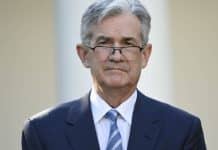The fiscal and monetary stimulus announced by the world’s major economies over the past month is a global policy event without precedent in peacetime. The increase in fiscal spending and loans in the US this year alone will reach more than 10 per cent of gross domestic product, larger than the rise in the federal deficit through 2008 and 2009. Although this is probably not as big as the financial stimulus implemented by China after the financial crash 12 years ago, most big economies could see government debt to GDP ratios rising by 10-20 percentage points.
The impact of central bank injections will be equally enormous. For example, the US Federal Reserve may finance part of the country’s fiscal stimulus by buying Treasuries. On top of that, its balance sheet will grow from purchases of mortgage bonds and packages of private loan assets. It would not be surprising if the Fed’s balance sheet increased by $2tn-$3tn this year, up from $4.2tn at the end of 2019. That is similar to the cumulative increase over the entire decade that followed the financial crash.
Those who claimed that central banks would be irrelevant in handling this crisis could not be more wrong. It is likely, given present economic conditions, that part of the rise in public debt ends up on central bank balance sheets for a very long time However, many investors — and, privately, some policymakers — wonder if this degree of stimulus by the US and most other big economies is “affordable”, and whether it will cause government debt crises and a subsequent rise in inflation.
If the answer to either of these questions is “yes”, markets could lose confidence in the ability of the authorities to cope with the coming recession. The results for asset prices would be gruesome. Fortunately, this is unlikely to be the case. A fiscal stimulus can be financed in three main ways. The government can sell almost unlimited quantities of short-term Treasury bills. This is normally the first recourse in the case of an unexpected surge in the budget deficit. Slightly later, the Treasury may increase the sale of longer-term debt issues to the public. Alongside that, the central bank may also increase its purchases of government debt from the public, in effect “monetising” the deficit for as long as the central bank balance sheet increases. It is likely, given present economic conditions, that part of the rise in public debt ends up on central bank balance sheets for a very long time. Even if not formally defined as “helicopter money” — and definitions scarcely matter in today’s health emergency — these actions would probably prevent any immediate rise in long-term interest rates. This would especially be so if major central banks follow the Bank of Japan in formally implementing yield curve control.
The good news is that this combination of fiscal and monetary stimulus will probably have larger “multiplier” effects on economic activity than if long-term interest rates were allowed to rise. Furthermore, interest rates on long-term debt remain well below probable growth in nominal gross domestic product. As a result, government debt is unlikely to rise in an uncontrollable way, even if the central bank sells the debt back to the public one day, thus eventually raising bond yields and increasing the cost of financing the debt. The bad news is that this form of financing can be dangerous if inflation starts to rise. We discovered during the financial crash that increases in central bank money do not automatically cause this. But today there is a complex mix of supply and demand effects at work and, together, they could cause inflation to rise.
For example, if supply continues to be constrained while consumers simultaneously receive large government transfers, aggregate demand could rise in an inflationary manner. In that case, it would be important for fiscal injections to be eliminated, or reversed quickly. Fortunately, the world economy has three factors on its side. First, this crisis comes at a time when inflation expectations are well anchored at, or below, central bank inflation targets. Second, lower oil prices are anyway helping to hold inflation down. Both of these allow more leeway for a temporary inflationary impact from the stimulus — should one occur, which anyway seems improbable. And third, the massive coronavirus stimulus will not need to remain in place as long as was the case after the financial crash. For now, the more critical job is to prevent a global depression.






















